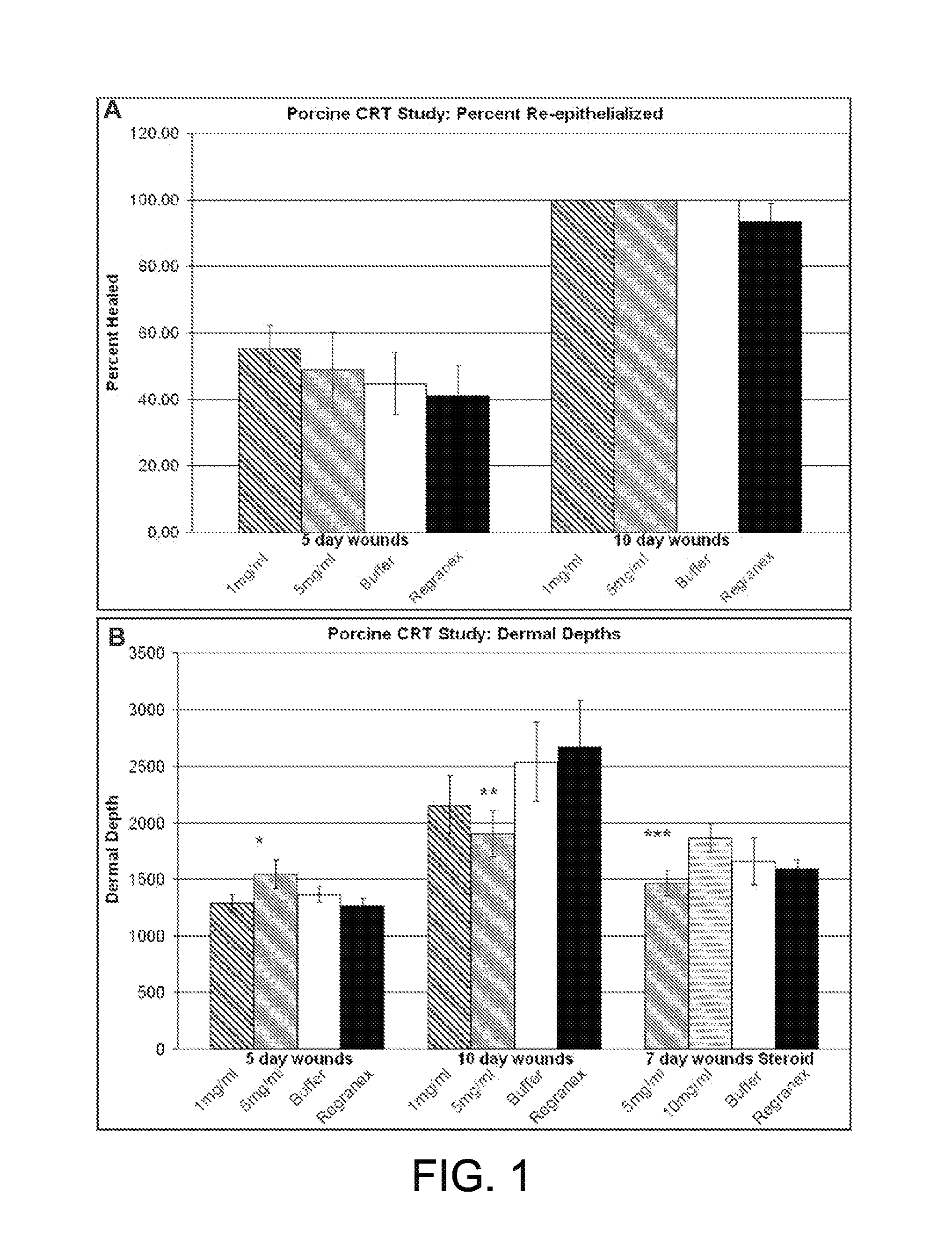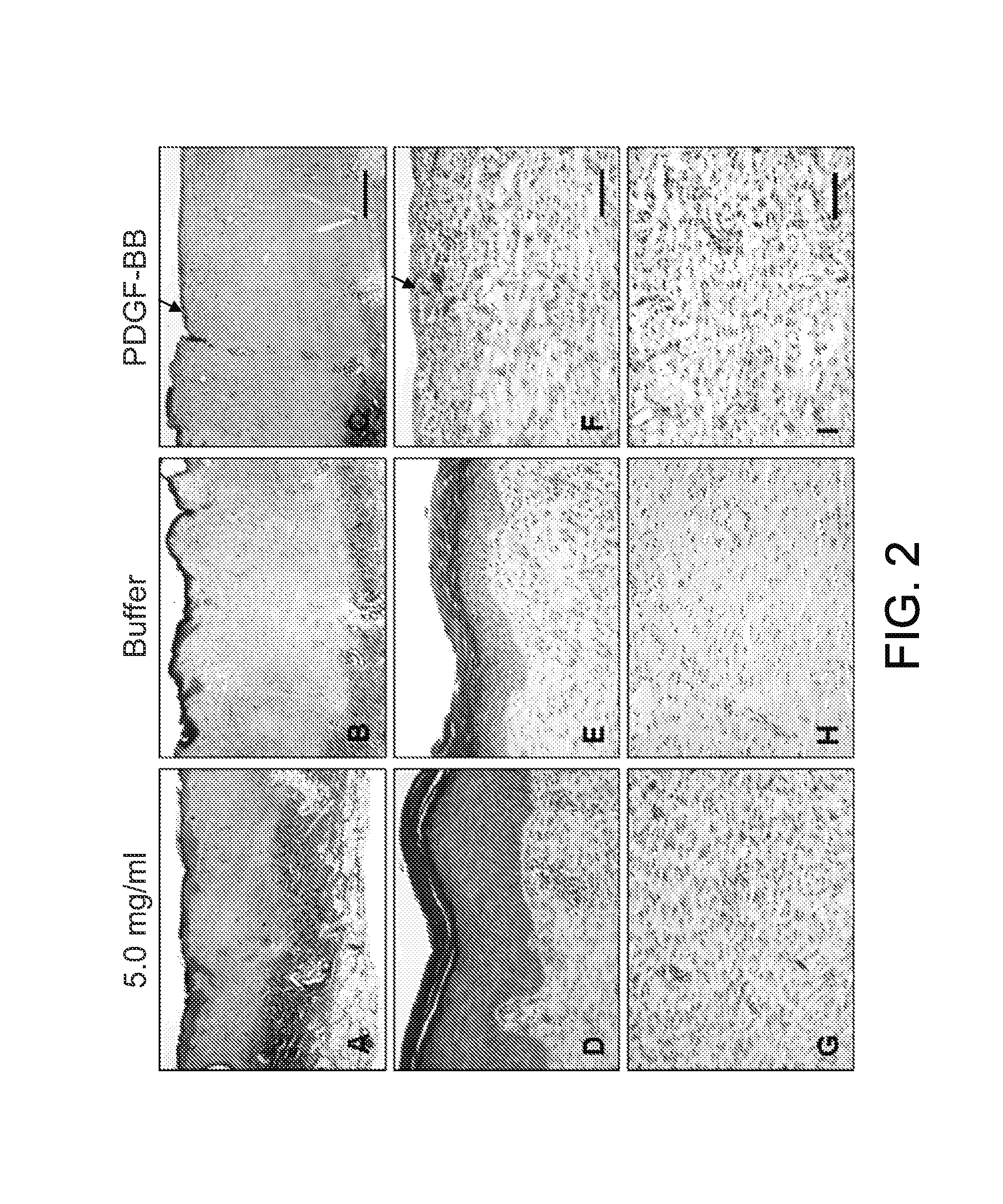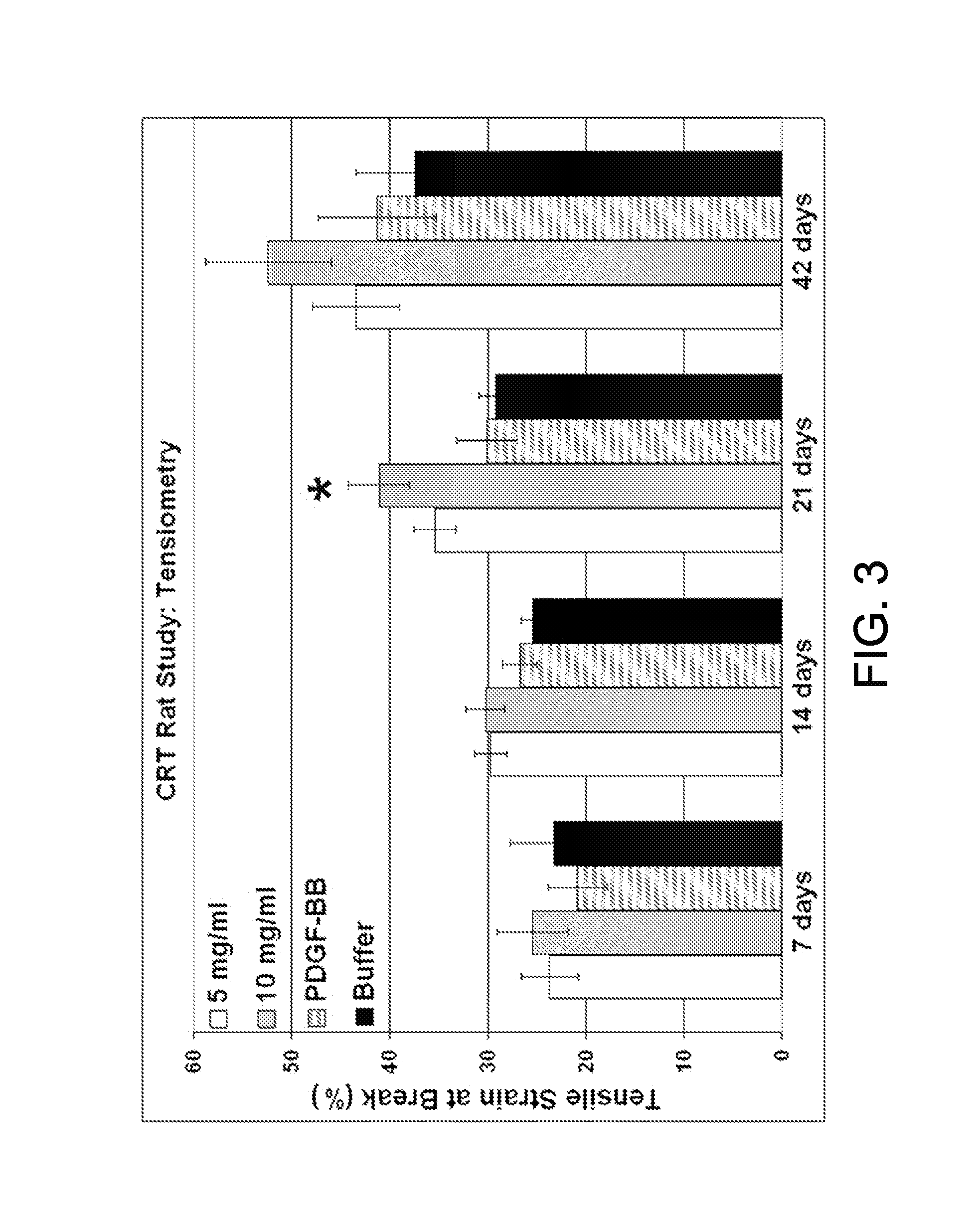Therapeutic and cosmetic uses and applications of calreticulin
a technology of calreticulin and calretin, which is applied in the field of therapeutic and cosmetic uses and applications of calreticulin, can solve the problems of chronic wounds open, prone to infection, and deficiency of important growth factors needed for proper healing, so as to prevent surgical adhesion, accelerate or improve wound repair quality, and prevent scarring or keloid formation
- Summary
- Abstract
- Description
- Claims
- Application Information
AI Technical Summary
Benefits of technology
Problems solved by technology
Method used
Image
Examples
example 1
Calreticulin Enhances Porcine Wound Healing in Normal Pigs and a Porcine Diabetic Model
Wound Re-Epithelialization
[0213]An accelerated rate of re-epithelialization of wounds is one of the indicators of enhanced wound repair. After 5 days of healing, epithelial islands derived from keratinocytes migrating upward from hair follicles and sweat glands, and epithelial wound edges in calreticulin-treated wounds, displayed a higher degree of resurfacing and epidermal stratification compared to either the wounds treated with buffer or Regranex®, PDGF-BB. Regranex® (PDGF-BB), the first and only FDA approved cytokine treatment for cutaneous wound repair, was used as a positive control in the porcine wound healing experiments. See, Clark et al., J Invest Dermatol. 2007; 127:1018-1029; Embil et al., Wound Repair Regen. 2000; 8:162-168; Meier K, Nanney L B, Expert Opin Emerg Drugs 2006; 11:23-37.
[0214]FIG. 1 shows graphs of quantitative morphometric analysis of calreticulin-treated (mixture of ra...
example 2
Calreticulin Increases Wound Tensile Strength
[0220]The quantitative (FIG. 1) and qualitative effects of calreticulin on the granulation tissue / neodermis suggested that the calreticulin-treated wounds might have greater integrity of wound strength compared to the buffer and PDGF-BB-treated wounds. Thus, the impact of calreticulin on the wound tensile strength was analyzed using a well-established rat incisional model for wound breaking tensile strength. See, Ballas C B, Davidson J M, Wound Repair Regen. 2001; 9:223-237. In this assay, four incisional wounds were created on each rat, which were approximated with clips, and four different treatments were applied: 5.0 mg / ml, 10 mg / ml calreticulin (mixture of rabbit 5-CRT+tag and 23-CRT+tag), buffer, and PDGF-BB; n=10 rats / treatment / time point. After the 7, 14, 21, and 42 days, wound breaking strength was measured with a tensiometer. Calreticulin at 5.0 mg / ml after 21 days induced a statistically significant increase in the breaking stre...
example 3
Calreticulin is Dynamically Expressed During Wound Repair
[0221]A dynamic expression of calreticulin during wound repair would suggest a physiological role for this protein in tissue repair. Moreover, the fact that exogenously applied calreticulin exerted apparent effects on both the epidermal and dermal components of the porcine partial thickness wounds supports this hypothesis. To test the hypothesis, the spatial and temporal distribution of endogenous calreticulin in the wound repair models 5 and 10 days after injury were evaluated by immunohistochemistry (IHC) in Regranex® gel-treated (PDGF-BB) (FIG. 4 D,E) or buffer-treated wounds (FIG. 4 A-C, F). In unwounded (adjacent) skin (FIG. 4A), basal and suprabasal keratinocyte layers of normal skin showed slight to no immunoreactivity in contrast to the more differentiated stratum corneum, granulosum, and spinosum upper layers of epidermis, which demonstrated intense immunoreactivity. At 5 days following wounding (FIG. 4B), in the buff...
PUM
| Property | Measurement | Unit |
|---|---|---|
| molecular weight | aaaaa | aaaaa |
| molecular mass | aaaaa | aaaaa |
| pH | aaaaa | aaaaa |
Abstract
Description
Claims
Application Information
 Login to View More
Login to View More - R&D
- Intellectual Property
- Life Sciences
- Materials
- Tech Scout
- Unparalleled Data Quality
- Higher Quality Content
- 60% Fewer Hallucinations
Browse by: Latest US Patents, China's latest patents, Technical Efficacy Thesaurus, Application Domain, Technology Topic, Popular Technical Reports.
© 2025 PatSnap. All rights reserved.Legal|Privacy policy|Modern Slavery Act Transparency Statement|Sitemap|About US| Contact US: help@patsnap.com



